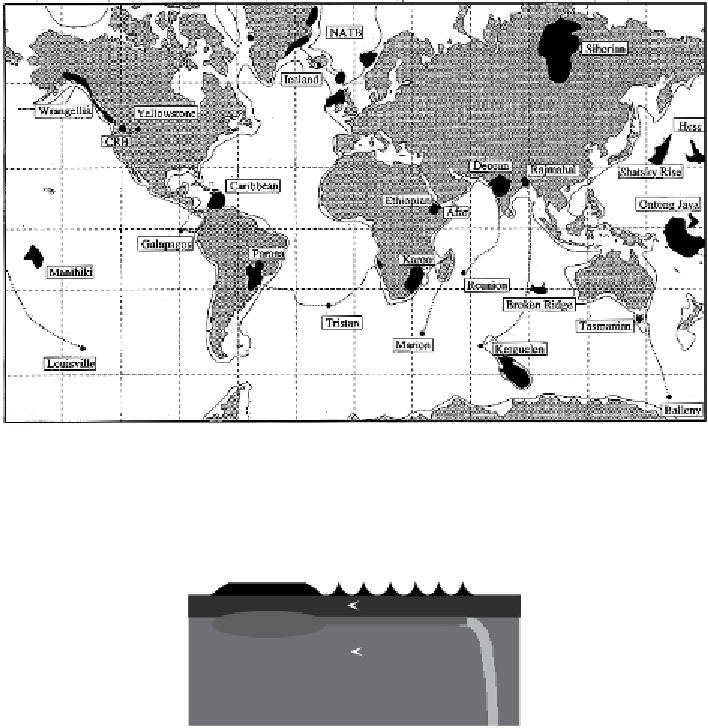Geology Reference
In-Depth Information
Figure 7.13. Map of continental and oceanic flood basalt provinces. Dotted lines
show known or conjectured connections with active volcanic hotspots. After Dun-
can and Richards [50]. Copyright by the American Geophysical Union.
Flood
basalt
Hotspot track
Plume head
Plume
tail
Figure 7.14. Sketch of the way a new plume with a head-and-tail structure can
account for the relationship observed between some flood basalts and hotspot
tracks, in which the hotspot track emerges from a flood basalt province and
connects it to a currently active volcanic hotspot. It is assumed in the sketch that
the plate and subjacent mantle are moving to the left relative to the plume source.
the plume head explanation of flood basalts. In particular, Griffiths and Campbell
argued that plume heads could reach much larger diameters, 800-1200 km, than
had previously been estimated, if they rise from the bottom of the mantle, and
also that they would approximately double in horizontal diameter as they flattened
and spread below the lithosphere (Figure 7.7). This is in good agreement with
the observed total extents of flood basalt provinces, the Karoo flood basalts being
scattered over a region about 2500 km in diameter. Campbell and Griffiths [56] then
argued that important aspects of the petrology and geochemistry of flood basalts








